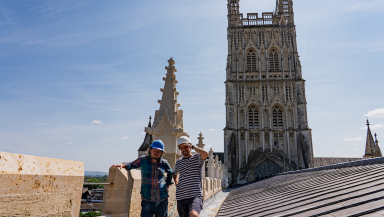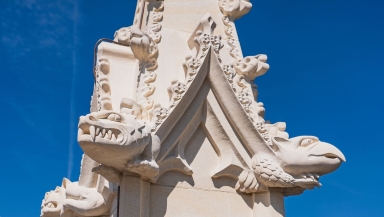
Gloucester Cathedral has completed a five-year conservation project on its historic exterior.
The cathedral has a history dating back to the earliest days of Christianity in Britain, with parts of the current structure dating back nearly 1,000 years.
The restoration work, which was focused on the northern side of the cathedral, was necessitated by years of exposure to the elements.
A team of stonemasons worked to integrate new stone into the building and have even added a group of four “grotesques”. Grotesques are not quite the same as “gargoyles”. While both are decorative stone figures, a gargoyle also has the functional purpose of channelling rainwater. In short, all gargoyles are grotesques, but not all grotesques are gargoyles.
The cathedral said that the completion of the work marked the end of an important chapter in the building’s conservation and was a demonstration that many of the traditional skills and crafts associated with maintaining cathedrals are alive and well.
The Dean of Gloucester, the Very Reverend Andrew Zihni, said, “This project is a wonderful example of the care and dedication that goes into preserving Gloucester Cathedral for future generations.

“As a place built to the glory of God, it’s a joy to see the building’s beautiful north side fully revealed again, and we’re incredibly grateful to everyone who has made this possible. We hope visitors will enjoy seeing the view of the Cathedral from miles around in all its glory once more.”
The cathedral gave thanks to all those whose donations made the work possible, notably the Julia Rausing Trust.
Later this summer additional restoration work will begin on the cathedral’s cloister, which has appeared in a number of Harry Potter films and in the BBC drama, Wolf Hall.
Eilidh McIntosh, Head of Fabric & Property at the Cathedral, said of the completed work, “This has been a rewarding project, and I’m so proud of what the team has achieved.
"It’s taken real skill, patience and teamwork to get to this point, especially from our in-house stonemasons and apprentices, who have brought such care and craftsmanship to every detail.”
A recent nationwide study by Historic England found that the British public greatly value historical church buildings and their preservation.













